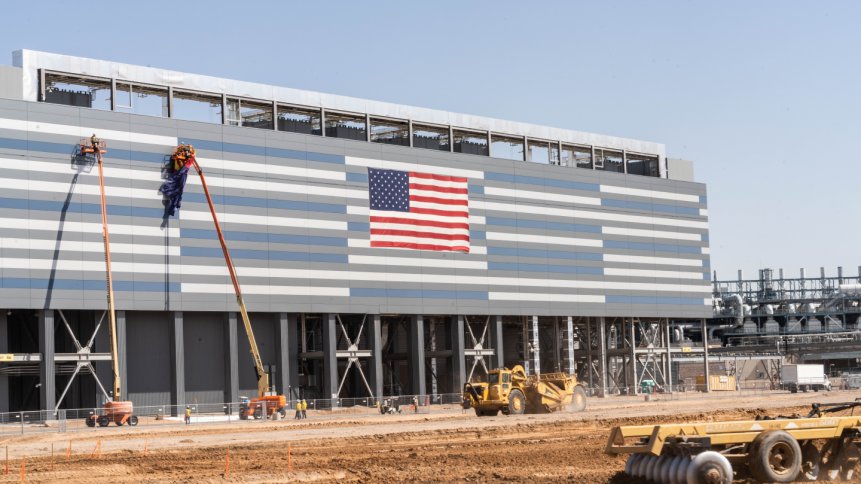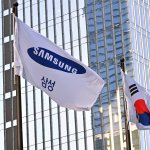Mixed views on the best play for post-pandemic supply chains

Bloomberg has noticed that the messaging of US companies to ‘bring production home’ remains strong based on the persistence of terms such as ‘onshoring’, ‘nearshoring’, and ‘reshoring’ in investor correspondence. Chewing over the news, National Review draws attention to the ‘money and action’ backing up the finding.
Notable activity includes the billions of dollars of investment pouring into Phoenix from chip-makers Intel and Taiwan Semiconductor Manufacturing Company (TSMC). Semiconductor industry watchers Anandtech point out that the 20,000 wafers per month throughput of TSMC’s new US fab puts it in the ‘megafab’ category – well below the 100,000 wafers per month capacity of the firm’s ‘gigafabs’ back home in Taiwan, but it still represents a substantial financial commitment.
While TSMC is building on its existing success with clients in the region, Intel on the other hand is looking to turnaround its business. The computing veteran recognizes that now is a good time to break ground on sites back home with the US government on a mission to dial down the country’s dependence on Asia for semiconductors. Initiatives such as the Facilitating American-Built Semiconductors Act or the FABS Act, would provide welcome tax credits for US-based investment in semiconductors. And chip-makers are highlighted in a raft of funding proposals being discussed in Congress.
Critical components
Integrated circuits have become a must-have for wide range of products, including some less obvious examples such as washing machines, USB charging cables, and toasters. Deloitte estimates that the revenue impact of the chip shortage on the automotive industry alone could amount to $500bn globally over the period 2020-2022, which makes clear the economic impact incurred when supply chains fail.
Beyond the discussion around monetary losses, there are other incentives for producing critical components closer to home – for example, to ring-fence chips for medical and defense applications. And wafer foundries are only one part, albeit a big one, of an intricate production line. Supply chain solutions provider Jabil points out that wire bonding, substrates, materials, and testing providers all experienced interruptions as lockdowns were imposed, impacting overall semiconductor output.
V-shaped problem
Imagine a container ship trying to follow a zig-zagging speedboat and you’ll be able to picture the difficulties that semiconductor manufacturing is having in responding to the unusual dynamics exhibited by the market. Following a decline as the pandemic took hold, demand rapidly snapped back at a rate that the industry is struggling to respond to.
Those with longer memories will recall that there have been wobbles in the past – for example, towards the end of 2018 through early 2019 as demand for cryptocurrency mining essentials such as graphic processing units (GPUs) and, increasingly, application specific integrated circuits (ASICs) plunged in tandem with falling Bitcoin prices.
The mismatch between production and demand led to a glut of chips and some commentators are predicting that the current boom in semiconductor manufacturing investment could lead to overcapacity in 2024.
Big picture
There are concerns too that sheer scale of the semiconductor supply chain may ultimately defy, or at least devalue, attempts to shorten it – for example, by ‘bringing production home’. In a study examining the Globality and Complexity of the Semiconductor Ecosystem by Accenture, researchers observed that ‘components for a chip could travel more than 25,000 miles by the time it finds its way into a television set, mobile phone, automobile, computer, or any of the millions of products that now rely on chips to operate.’ And by their calculations, a semiconductor product could ‘cross international borders approximately 70 or more times before finally making it to the end customer.’
Just in:
TSMC just posted record net income of NT$237b (US$7.9b) for 2Q
Beating estimates by 7.8%
Gross margin of 59.1% is well above guidance and estimates.— Tim Culpan (@tculpan) July 14, 2022
This journey reveals some key vulnerabilities, such as the dependency of chip-makers on photolithography specialist ASML, based in The Netherlands. The firm is critical to the supply of extreme ultraviolet lithography machines (used to transfer integrated circuit designs onto silicon) – a point raised by IEEE Spectrum in its discussion of the global chip shortage. Another worry is the supply of gases, specifically neon, which faces disruption due to the war in Ukraine (local companies Iceblick, Ingas, and Cryoin manufacture over 70% of the world’s neon gas supply, according to analyst firm Omdia).
Sage advice to keep things moving
Given everything that the world now knows about supply chain disruption, what should firms do? One reaction is to double-up reshoring efforts and ‘bring production home’ – the behavior noted by Bloomberg at the top of this article. But that may not be the optimum strategy, and certainly, the global span of sectors such as the semiconductor manufacturing industry discussed here may simply be too vast for a single country to manage on its own.
Instead, the buzzwords emerging from international trade lessons learned from the pandemic are diversification and substitutability. Upfront, this means looking for alternative suppliers to augment current arrangements. It’s often prudent to view economic models with extreme caution, but numbers suggest that greater diversification could reduce the volatility of a country’s economic growth by 5% when hit repeatedly by supply shocks.
Considering substitutability, many device makers have already pushed this button – modularizing their offerings, decoupling software from hardware, and taking other steps to make their products more resilient to component shortages. The Harvard Business Review shares the example of automaker Stellantis (owner of Fiat, Chrysler, and Peugeot brands) that engineered its way out of a supply chain constraint by switching from digital to analog speedometers in one of its models manufactured in Sochaux, France, allowing those vehicle sales to continue.










